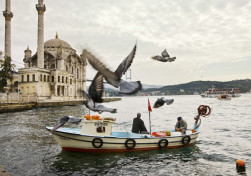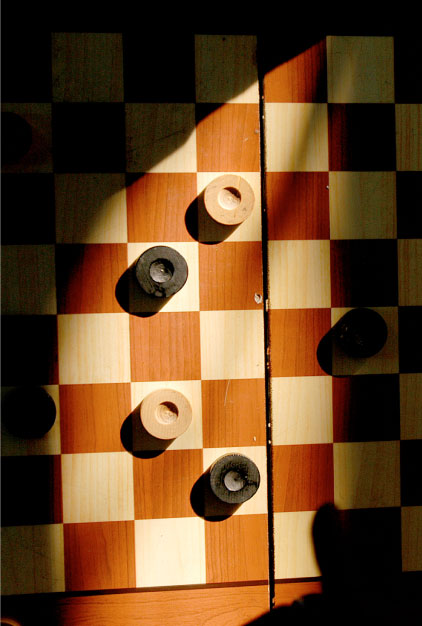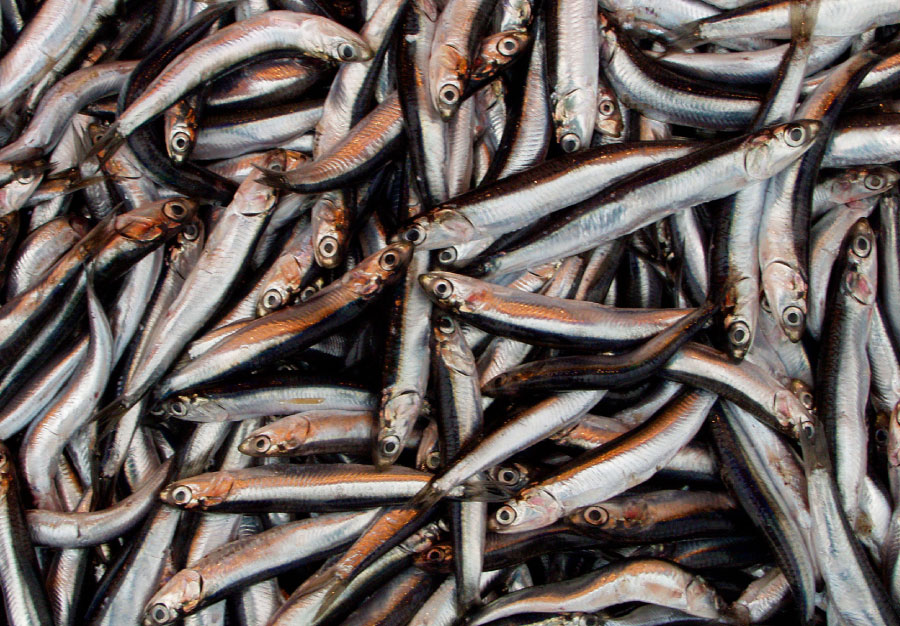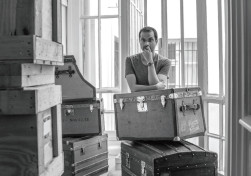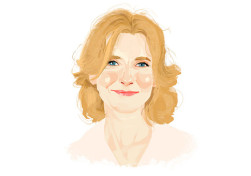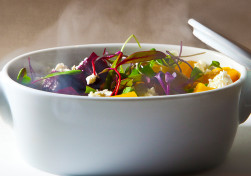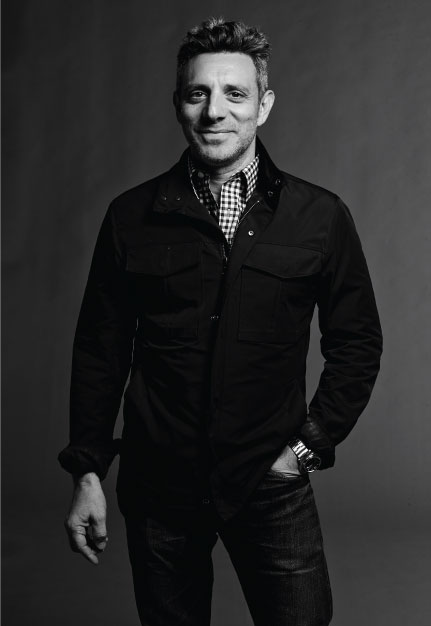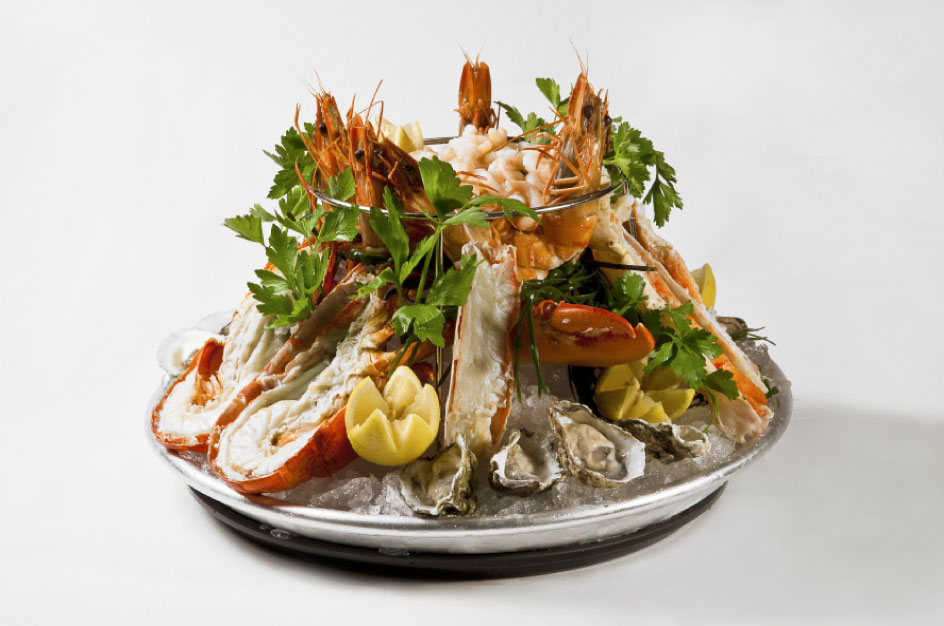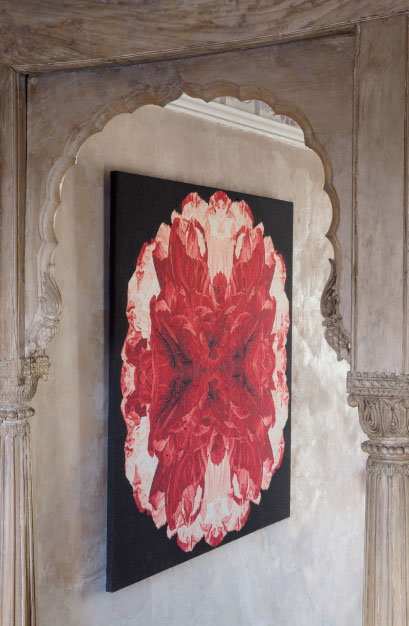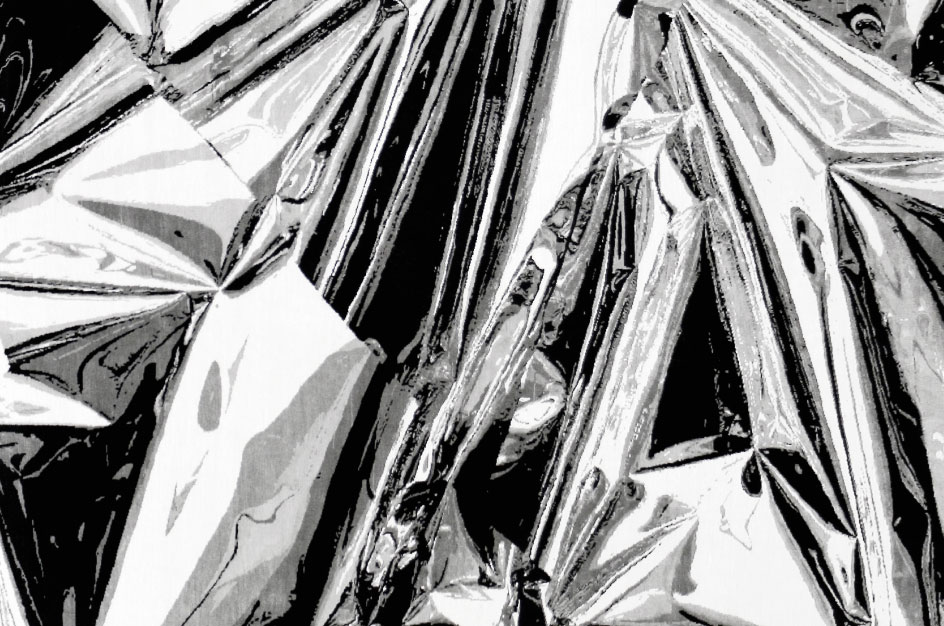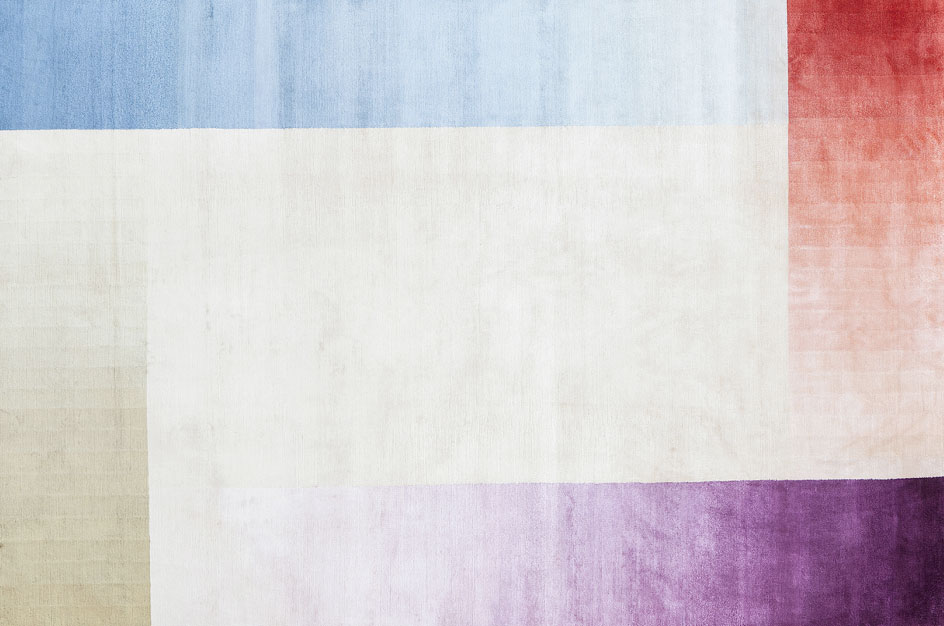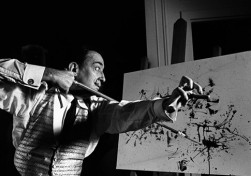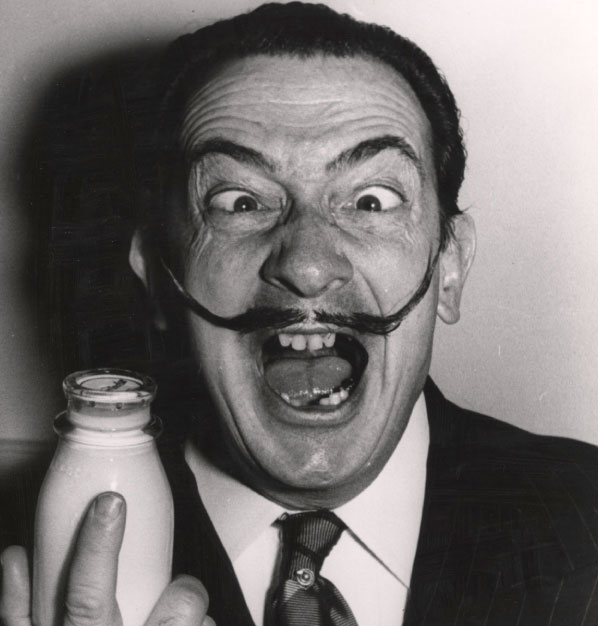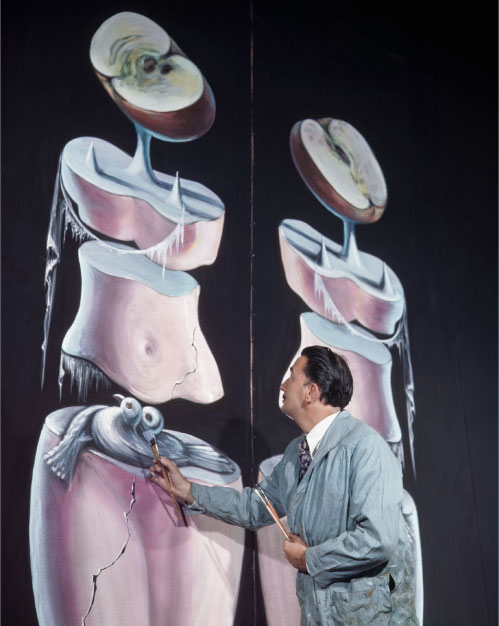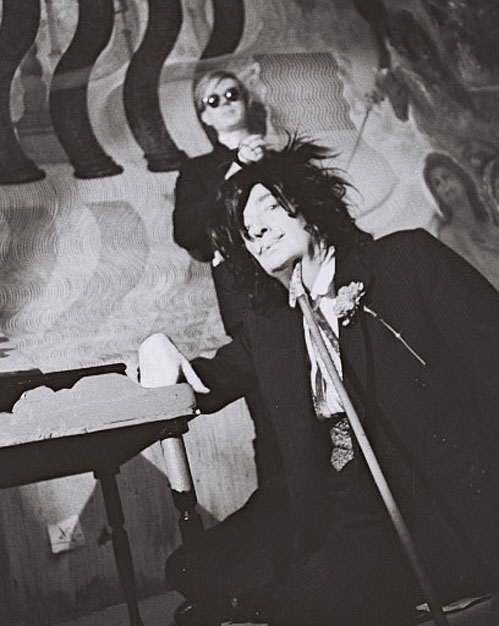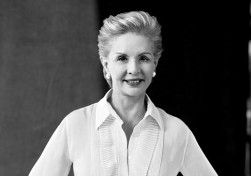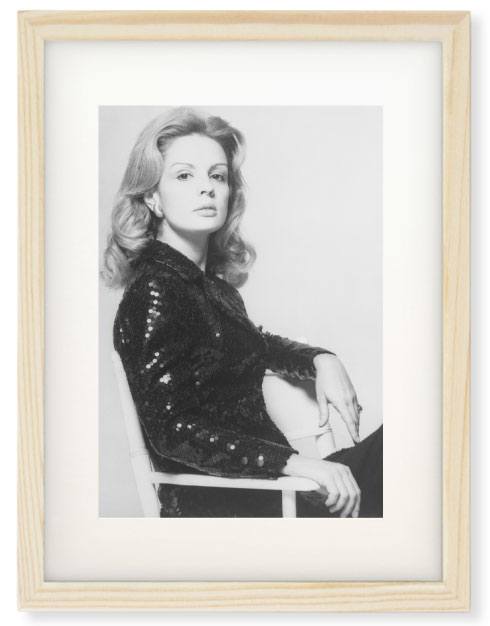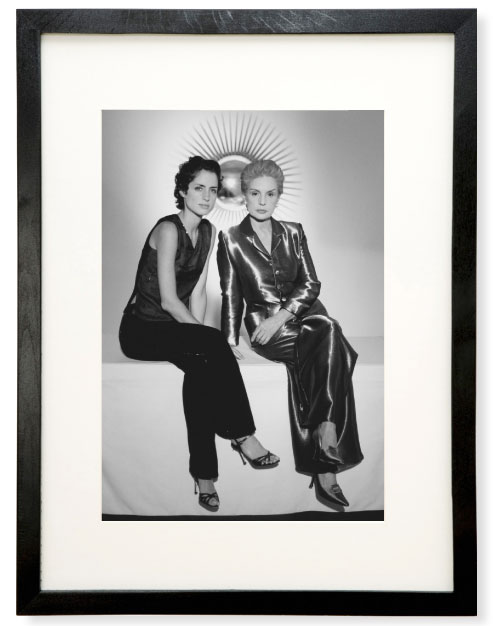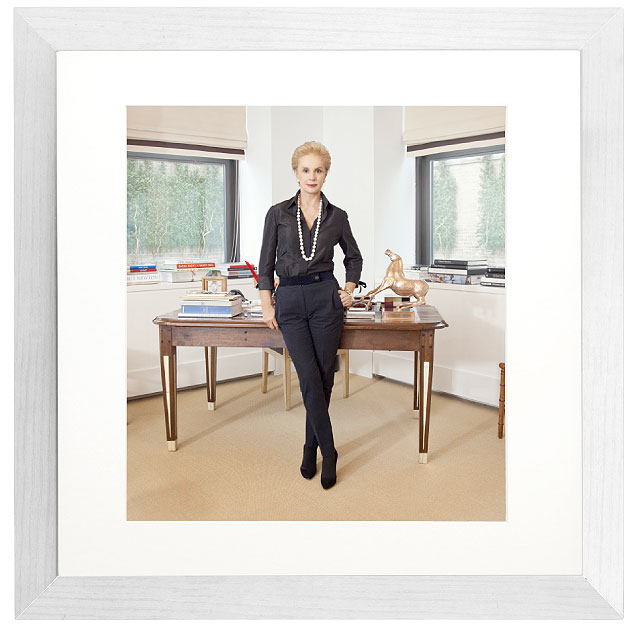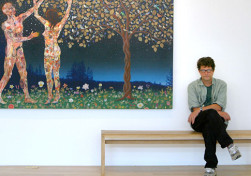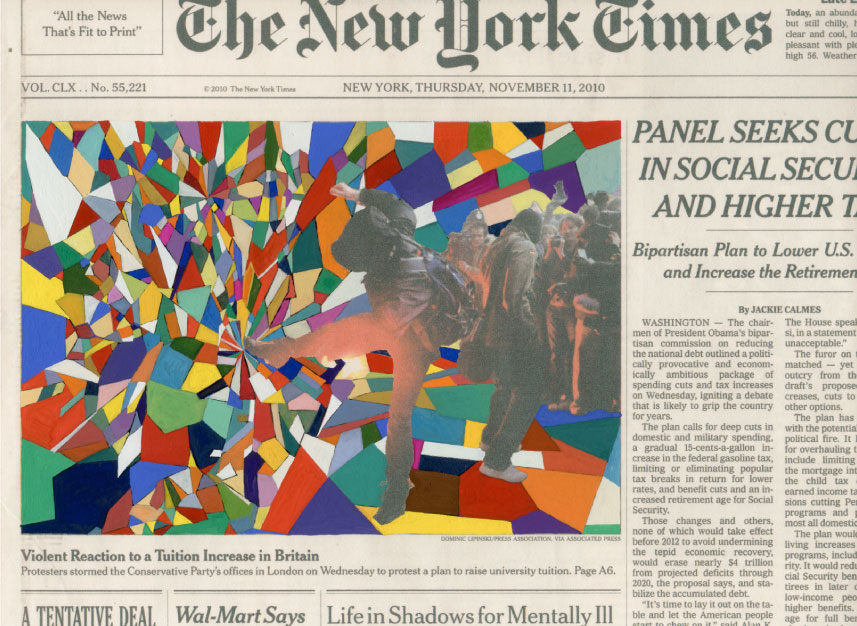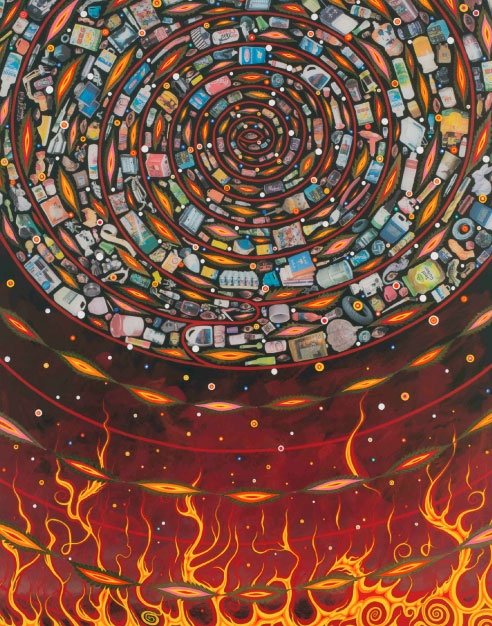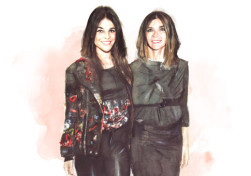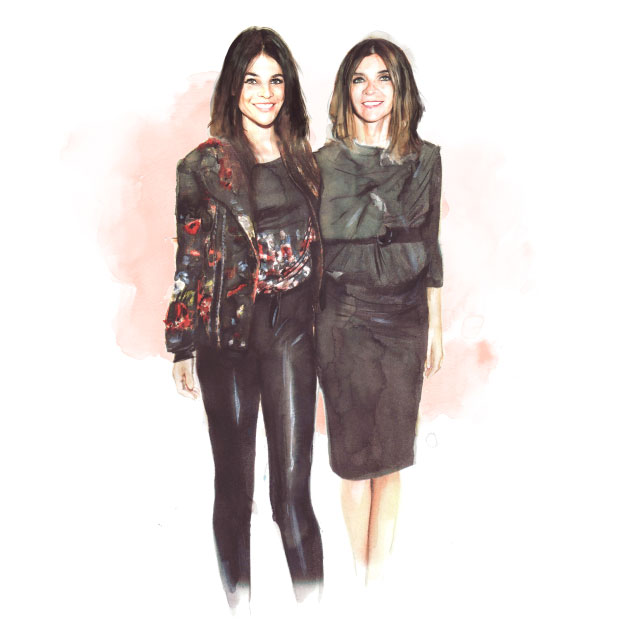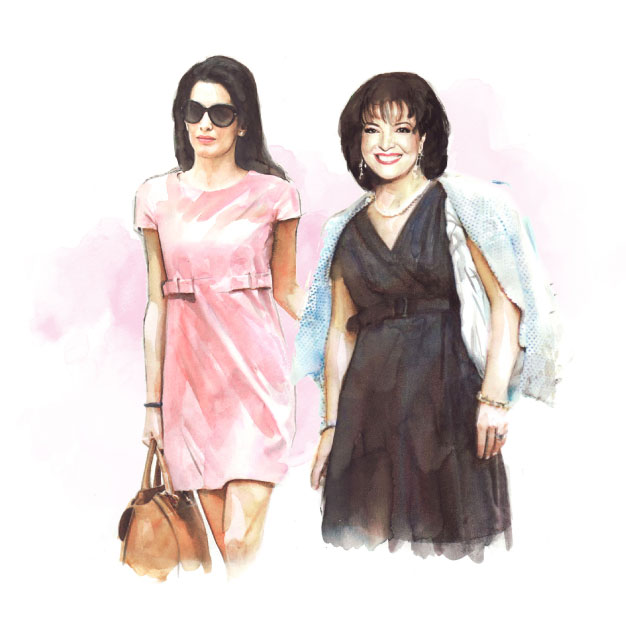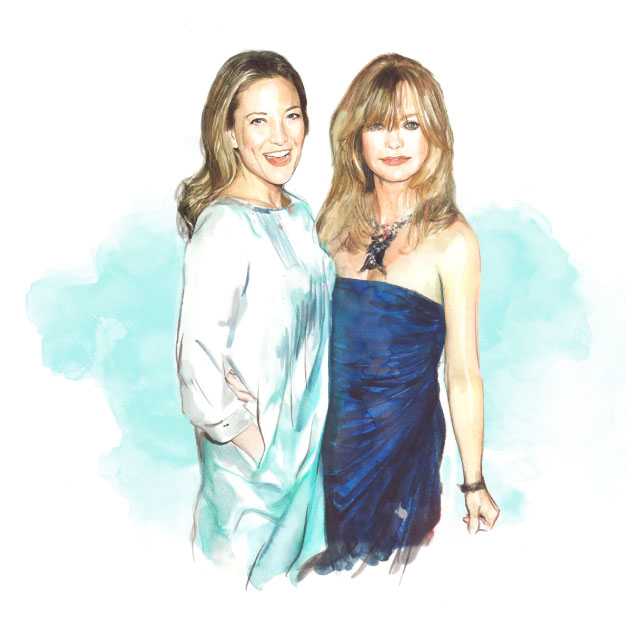The first time I crossed the border into Turkey, I was on foot, on a long walk from Gdansk in Poland. My final destination was the glorious city of Istanbul, but on reaching Erdine I found it hard to leave. Right on the border with Greece and Bulgaria, the ancient city founded by the emperor Hadrian was for a while held by Greek troops thanks to some sharp military maneuvering before the outbreak of World War I, and known as Adrianople. The Turks won it back, but it was destined thereafter to be an outlier, a city on the road to nowhere; and that, to be honest, is why I love it so. For me it is the soul of Turkey – and a perfect preparation for Istanbul itself.
After our journey by foot through the grey, drab cities of post-Communist Eastern Europe, Erdine was also a gateway to the marvels of Turkish enterprise: food stalls and coffee kiosks, restaurants and bazaars, and spicy food and minty tea; a cornucopia of possibilities. On our first day, we found a room in an old hotel, with doorknobs polished by a century of use, and woke to the sound of a cockerel crowing like a muezzin. For breakfast we ate yogurt and honeycomb, and went out to explore the second capital of the Ottoman Empire.
There aren’t many tourists in Edirne. As we wandered through its charming Ottoman district, with its collections of 19th-century wooden houses, if we half-closed our eyes we could be back in the world of pashas and viziers, and splendidly accoutred armies on the move to conquer Europe.
The next day, entering the courtyard of the great Selimiye Mosque, we stood before what is, perhaps, the most perfect and ambitious mosque ever raised in Turkey. It is the masterpiece of that 16th-century architect of genius, Sinan, rival not only to the glorious mosques of Istanbul but to the mother of them all, the great church-cum-mosque of Aya Sofya – of which more later. Aside from a few weekday worshippers, I had the place to myself, a moment to reflect on my smallness in the grand arch of the cosmos. A few moments later, I was in the 16th-century hammam, or baths, also built by Sinan, enjoying a leisurely steam soak.
Partly European, partly Islamic, Edirne is comfortably modern yet steeped in the traditions of the past, and above all slow, expansive and relaxed. Life doesn’t bustle in Edirne. Old men play backgammon in the square, and drink their tea. Once, it’s true, the Ottoman armies would gather here to begin their campaigns into Serbia and Greece, even to the walls of Vienna, 1,000 miles away. But with the departure of the armies, the place would revert to its usual unruffled calm, and sultans would descend to hunt in the royal parks, away from the pressures of populous Istanbul.
It’s worth paying a visit here to the Ottoman medical museum, close to the railway station, which recalls the sensitivity of early Islamic medicine, with its particular care for the sick in mind. While Europeans locked their madmen in bedlams, to be jeered and stared at, the Ottoman doctors used gentle and effective treatments – aromatherapy, music and the sounds of water – that could alleviate, if not cure, a patient’s condition.
Some of the city’s cobbled streets, not to mention the odd café, have an almost Central European air. Edirne was linked to Central Europe by trade and war, and many of the languages of Southeastern Europe were once spoken there: Greek and Bulgarian, Serbian and German, and all the mountain dialects of the Pindus and Rhodopes mountain ranges. Edirne is a little lost vision of what once was, and I like it for that. It’s also a taste of things to come.
For what comes next – a few hours away by bus or car – is Istanbul, a city of such grandeur and complexity, a city so freighted with meaning and possibility, rich, bewildering and exciting, that it cannot be comprehended all at once.
Our journey to get there was unremarkable: two days’ walk across the hot Thracian plains, trying to find byways that avoided the main road, and its hum of dusty trucks. Our reward was the sea at Tekirdag, our first sight of the sea for many months, and thousands of miles. We lay on the sand, in the shadow of a minaret, hearing the muezzin’s call to prayer echo across the water and watching a sky crowded with migrating storks. Men in tea shops waved and invited us to join them, but we only smiled. A few more miles, a few more hours, and we would reach the city of our dreams.
“You walked? From Poland?” The reception clerk shook his head. “You must have been carrying a Kalashnikov.” I’m glad he said so: it made me feel rather brave. It was nonsense, of course: all the way from Poland we had been fed and hosted by kindly souls in villages and farms, and when I once brandished a stick it was only to repel a Carpathian sheepdog. But his remark was of a piece with something we had already learnt. “You’re in good hands here,” people always said, as they invited us across their threshold. “But don’t go on. Stop here.” Over the ridge, beyond the river, or in the next town, they said, “They’ll rob you, cheat you, or eat you alive.” And in the next place, of course, they’d say the same.
Along the shore of the Sea of Marmara, where the great ships wait like patient cattle in the roadstead, we had walked, still dreaming, through the stripy walls of the old city of Istanbul – double walls, triple walls, of rubble and stone and bands of brick, punctuated by towers, most fearsome on the landward side. No one, the Byzantines believed, could take the city from the sea. In the shadow of the massive stones, we passed small market gardens that once fed the mightiest city in medieval Europe, with a population of well over a million.
Constantinople, as the rechristened city of Byzantium became known, was founded by Constantine the Great in 330AD to be the second Rome, and much has been made of the fact that it encompassed seven hills, as did Rome. We failed utterly to identify them: Istanbul is simply a hilly city, full of steep streets and even stepped streets, though none rival the splendid Camondo Stairs completed in Art Nouveau glory in the late 19th century.
As we tramped into the city, our belongings on our backs, we passed some of the hamals, or porters, who carry vast loads on their backs secured by a band around their foreheads. Bent almost double, they put our chafing shoulders to shame. But the hills kept us cool, encouraging a breeze, and giving glimpses, from the top of an alley, or a window over the street, of the extraordinary Bosphorus, twinkling and choppy in the summer sun.
Still to this day one of the busiest waterways in the world, the Bosphorus meanders through the very heart of Istanbul, and it puts the city on one of the most astonishing crossroads in the world. Too many cities are known as the place where East meets West; in Istanbul, as we soon discovered, it’s no idle boast. We stood at the very edge of Europe, looking east across the straits to Asia, and the Turkish heartland. Perhaps, as one overawed ambassador put it in the 16th century, it is a city devised to be the capital of the whole world.
His 16th-century world was smaller, of course. But Istanbul felt immediately like the turnstile of a world, whose size we could measure through a few hours at lunch beneath the Galata Bridge, dining on fish plucked from the waters at our feet: the exquisite lüfer, or bluefish, simply grilled. From there we watched the ships that glide along the Bosphorus West to East, and East to West.
The Bosphorus is not a river but a flooded chasm, created thousands of years ago when the Black Sea burst into the Mediterranean, almost a mile wide and several hundred feet deep. Jason and the Argonauts passed by here, and Xenephon’s shattered army of ancient Greeks, and even now it is where the people and the products of Southern Europe meet the Eastern world of the steppe and the far shores of the Black Sea. Oil tankers, Russian warships, battered freighters from China, cruise ships from Naples and Southampton, all file through the straits, dwarfed by the hills of Istanbul, and sliding easily beneath the great suspension bridges that have been flung across from the European to the Asian shore.
Wherever I walked in the city, I found myself knee-deep in history; the past guiding my steps, and its relics scraping my shins. Wandering towards the Grand Bazaar up Divan Yolu – the old Imperial Road from Constantinople to Rome – I trod in the footsteps of Byzantine emperors. Dropping down from Topkapi to Eminonu, I ambled along the road that wound past the Sublime Porte, the seat of Ottoman government, where the Grand Vizier governed, in a sultan’s name, an empire that stretched from the borders of Iraq to the river Nile, and from the Crimea to the Danube. On my way to the Aya Sofya I stopped at the Milion, now just an obscure stump of stone, from where, more than a thousand years ago, all distances within the Roman Empire were measured.
Before actually going into the fabled church-cum-mosque, we descended, via a dark stairway, into the astonishing Yerebatan cistern. This subterranean forest of beautiful marble columns, rising from a shallow underground lake, was built by the emperor Justinian, as was the Aya Sofya just beyond. This was constructed to be the temple to beat all temples and it is said that when, in 535AD, the emperor first entered the building, he murmured, “Solomon, I have outdone thee!”
Aya Sofya’s architects were the first in history to figure out a way of placing a vast dome, with a circular rim, on a building that was essentially square. Square on the earth, for the world below, and domed above, for the divine world. “We knew not whether we were on Earth or in heaven,” a group of 9th-century Russians declared when their Byzantine hosts ushered them into the building – and adopted Christianity on the spot.
It was, it is true, also a piece of imperial bling: I couldn’t help smiling when I saw, at the top of every column, the initials of Justinian and his saucy wife, Theodora, entwined in marble: I and T. And upstairs, in one of the galleries, I was startled to find a marble inscription on the floor that read, simply, Enrico Dandolo: the tomb of the blind nonagenarian Doge of Venice who, in 1204, masterminded the first successful assault on the walls of Constantinople in almost a thousand years. For the great empire of Byzantium, which ruled from this city, it was the beginning of the end.
The city that lies before our eyes is now primarily Ottoman. When their great armies stormed the city for a second time in 1453, raised the crescent of Islam over the dome of Aya Sofya and made the city the capital of their new empire, they set about restoring its glory. Successive sultans indulged in a frenzy of building, paid for by the trade and peace they brought to Istanbul. Great new mosques decorated the skyline. At their feet, the famous Grand Bazaar dropped down the hillside to the Golden Horn, a huge creek.
I always enjoy visiting the bazaar, the original shopping mall, a glorious warren of tunnels and arcades offering everything from old books to jewels, where you can always find a pleasant café and sit for a moment drinking in the atmosphere. The Grand Bazaar has two mosques, more than 5,000 shops and innumerable secrets, and perhaps no one in Istanbul really knows them all.
The streets around are worth exploring, too, not least for the amazing old caravanserais, where caravans of camels from the Asian side or of mule-trains from Europe would be stabled, and their goods unloaded and stored, while the merchants haggled and ate and slept upstairs.
Nor should the sultan’s palace be missed. Unlike Versailles or Buckingham Palace, Topkapi is not a monolithic building with a façade designed to make you feel small, but more like a luxurious encampment, a sequence of pavilions and tents raised in marble and stone, spilling down the hill of Seraglio Point to the Bosphorus below. It is formed of three increasingly intimate, and secure, courts: the first public, and the last for the enjoyment of the sultan and his family alone. To one side are the harem apartments, built and rebuilt over the centuries to house the sultan’s many concubines and women attendants. Walking through, it charms and outrages in likely equal measure.
Looking out from the palace are views of a conical tower across the waterway known as the Golden Horn. Not as majestic as the Bosphorus, into which it flows, the Golden Horn is a substantial creek, and it divides old Istanbul from the district known nowadays as Beyoglu, which leads on to other, more modern districts of the city. Once known as Galata, it was originally a small walled city of its own, run by Italian merchants; over the centuries it has kept its European character, and today it is where the consulates and the restaurants, the bars and many of the hotels of Istanbul are found. The area around Topkapi, Aya Sofya and the Blue Mosque is good for sightseeing, but Beyoglu is where modern Istanbul hangs out.
Indeed, below the heights of Galata, below the famous Genoese tower (worth a lift to the top, for the stunning views), is Istanbul Modern, a former brutalist warehouse converted into a smart contemporary art gallery. One moment, then, you are in an arcade of the Grand Bazaar, in a café out of the Arabian Nights, and the next you find yourself in an achingly cool diner straight from New York or San Francisco. Such is Istanbul.
Whenever I return – which I have done, almost annually, for the past 20 years – I find myself standing in mute astonishment at the sight of a city caught so dramatically between the continents, between the ages and the faiths, between the ancient and modern. I see first-timers stepping out, wary and expectant, clutching their guidebook, wondering which way to go, and envy their discovery.
The Baklava Club by Jason Goodwin, an Inspector Yashim mystery, is published by Sarah Crichton Books
Your address: The St. Regis Istanbul
Images by Gallery Stock, Getty Images, Franco Pagetti/VII, Ashley/VII, Serrano Anna/Hermis.fr
“I was an army brat and traveled all over the world with my father to places like Burma,” the 48-year-old says. “Wherever we went we’d take at least 25 trunks. To me, that was how people traveled.”
When the designer joined Moynat in 2011 from Hermès, where he’d worked for ten years under Martin Margiela and Jean Paul Gaultier, the LVMH accessories brand offered the perfect link between private passion and professional career: Nair owns more than 200 antique trunks. Moynat, which was launched in 1849 by Pauline Moynat, who sold travel goods, and trunk-making brothers Octavie and François Coulembier, was one of France’s oldest trunk-makers, with a reputation for innovation. “In 1870, it brought out a lightweight trunk using a wicker frame instead of a metallic one,” Nair explains. It was also, he adds, the first to use hardened gutta-percha waterproofing as well as varnished canvas and leather trimming.
What appeals most to Nair, though, is the manner in which trunks were customized. “There were all sorts of styles made,” he explains. “The limousine style was curved to fit on to a car roof; the cabin trunk opened in front and slid under the berth; while automobile trunks attached to the back of the car, before the trunk as we know it today was devised.”
The first trunk Nair ever bought, in Chantilly in France, was “a real fluke”, he admits. Although it was in fantastic condition, its owner was desperate to get rid of it. “Because it was arched, she couldn’t use it as a table and it was just gathering dust in the garage,” he says. “So I got it for only around $270.” A contemporary Moynat trunk, on the other hand, will set you back several thousand dollars.
Other unexpected finds have been a 1907 cabin trunk from Marseilles, with its key still in the lock, and an ugly black trunk found in Rennes. “After stripping and cleaning it, it turned out to be a lovely dark green, which, I then discovered, matched the car that it was originally designed for.”
“I am fascinated by the idea of the customer asking for a certain color and a certain number of locks, and the reason they wanted them,” he continues. “I always wonder what adventure they were going to have.”
His favorite models are those from the Belle Epoque, which he describes as “real couture pieces, because no trunk is similar to another”. But these are becoming increasingly difficult to find. “I have contacts all over Europe – France and England are the best sources. But really lovely ones are becoming a rarity, which makes the ones I already have even more precious.”
1. The Soviet Union, 1986
This was my first overseas trip. I’d been saving my babysitting money for five years, and found an anti-nuclear war organisation that took students to Moscow and Leningrad. Although it was controlled and pretty grim – there was nothing to buy, and it was a gray November – we did get to talk to Russian teenagers and professors. One asked if we could name any Russian cities other than Leningrad or Moscow, or any living Russian authors. And we couldn’t. I discovered then that you could learn about places without going there. When I got home I enrolled in Russian and International Relations college courses. That was a mistake: it was like marrying the first boy you ever kissed. I wasn’t in love with Russia; I was in love with travel.
2. Wyoming, 1992
After college I did a road trip with my then boyfriend to the Rocky Mountains. It was so exotic; after Connecticut, where I grew up, Wyoming was the real Wild West. People had guns. My job as trail cook was to take up to ten people into the mountains on horses, hunting and fishing and exploring glacial lakes. I had no experience, but I had more capacity than I thought. And my first story was based on those experiences, and launched my career as a writer.
3. Texas, 1994
I’d heard about these rodeo groupies called Buckle Bunnies, and so pitched an idea to an editor about doing a piece on them. It was my first paid assignment and the pressure was huge. I had to learn to walk up to strangers and get them to tell me about their lives; in this case, their sex lives. I learnt something I have used ever since: if you are straight with people, tell them what you’ve come for and what your boss expects from you, and confess to your stupidity, they’ll often tell you what you want. I learnt then I could be a journalist.
4. China, 1998
At that time, journalists weren’t allowed into China. But I was naive and cocky. I said on my visa form that I was a housewife and bribed people to take me to the Three Gorges Dam, so I could write a story. It was only on the plane on the way back that I realized how stupid I had been. I knew then I didn’t have the stomach for hardcore reporting. Sometimes you have to make a journey to realize you’re on the wrong journey.
5. New Zealand, 2000
This time I thought: forget about global politics, let’s do something fun. So I went on a research vessel with scientists off the coast of New Zealand to go in search of giant squid. Although looking for a sea monster was exciting, on the ship I realized that I could not have children and that I did not want to be married to the person I was married to. The results of that personal journey were so devastating that I didn’t go traveling for quite a while.
6. India, 2004
When I went to an ashram in India, I was at a real crossroads. It was a point at which I changed enormously: there was me pre-India, and there was me after-India. I stayed in the same ashram for four months, and the greatest lesson I learnt was to be still. It wasn’t fun, but it was a great spiritual journey. There are many reasons to travel: to have adventure or to run away or to be exotic or to learn about another culture. Sometimes only a pilgrimage can help you find out about yourself.
7. French Polynesia, 2012
This last journey was glorious: traveling around islands to do research for my most recent novel, The Signature of All Things. Up a volcano, in the rain, on a remote island, I suddenly realized, at the age of 43, that I was exactly where I wanted to be in my life: collecting fascinating pieces of information to write up. It’s a great position to be in. The quote I love is, “It is better to live your own destiny imperfectly than to live a perfect imitation of someone else’s life.” In 2000, when I was married, I wasn’t. So it’s gratifying to see I’ve learnt those lessons.
The Signature of All Things is published in paperback by Penguin
A born-and-bred New Yorker, John DeLucie was a late starter in the culinary world, discovering his calling at the age of 29. Since then, he has become a major figure on New York’s restaurant scene, making his name as the executive chef and partner of the Waverly Inn, the Greenwich Village restaurant that became the ultimate hangout for the city’s glitterati. DeLucie is now proprietor and executive chef of the Lion, Bill’s Food & Drink and Crown, three of Manhattan’s most celebrated restaurants. His latest project has been to reimagine the culinary offering at the refurbished King Cole Bar & Salon at The St. Regis New York.
What’s your earliest food memory?
When I was a child we lived with my grandparents, who were Italian immigrants, and one of my earliest memories is of being in the kitchen with my grandmother. My grandfather sold fruit and vegetables, and he would bring home any produce that didn’t sell that day. It was grandma’s job to make dinner with it. So it could be things like dandelion greens or broccoli rabe – food that was pretty unusual in America at that time. I remember having dinner at a friend’s house in my teens and eating iceberg lettuce. I didn’t even know what that was.
What was the first thing you ever cooked?
Ditalini with tomato and celery leaves and chickpeas – basically pasta fagioli. I’d seen my mother make it a thousand times and one day when I was about 13 I thought, “I want to do that.” I remember painstakingly taking the delicate light-colored leaves from inside the celery, not the big overgrown darker leaves – just like I’d seen my mother do.
Who taught you to cook?
My mother, my aunts and grandmothers were all instrumental. My dad had 11 siblings and my mom had four brothers and sisters, so every Sunday we would gather somewhere with a lot of people. There was always tomato sauce and pasta or ravioli and some kind of meat. It was a very food-oriented family.
What’s your favourite Italian-American dish?
Veal milanese. I just love a pounded veal cutlet drenched in egg and breadcrumbs and pan-fried. It’s the most delicious thing in the world.
What made you become a chef?
I had a lot of different jobs after college. I was a musician. I sold advertising, I represented fashion photographers, I worked as a headhunter in the insurance-brokerage industry. Around the time I was 29 I realized I wanted to cook for a living, so I enrolled on a masterchef class at the New School, and it turned out I had some aptitude. When the course finished I got a job making salads in a very busy restaurant on Third Avenue.
Did you ever have any cooking disasters?
One of my first jobs was at Dean & DeLuca. They asked me to make a potato salad and I got so excited that I forgot one vital ingredient – the potatoes.
How would you describe the menu you’ve created at the King Cole Bar & Salon at The St. Regis New York?
Over the years there have been some amazing chefs at The St. Regis New York, like Gray Kunz, Christian Delouvrier and Alain Ducasse. So when it came to creating the menu, we felt it had to be a real departure from the past. We took a simple approach: super-accessible dishes such as trout wrapped in prosciutto and grilled merguez. We were thinking about the modern traveler who would relish the splendor of the place but not want to get bogged down by food that was too traditional or too complex.
Where’s the best city in the world for food at the moment?
There are so many hotspots – Spain, Italy, the Nordic countries – but Brooklyn is really interesting right now. It’s a very exciting time. Trend-wise, vegetables are pretty hot – dishes such as carrots wellington and parsnip steaks. I think it’s great that we’re paying more attention to stuff that’s growing.
What’s your ultimate comfort food?
A great pizza with a delicious chewy crust – there’s nothing better. I like it best with just tomatoes and chilli and oregano.
What’s the most memorable thing you’ve ever eaten?
I stumbled upon a bakery in Naples with an old pizza oven that had been there for centuries. They were making flatbread, so we bought some, along with some buffalo mozzarella and a bottle of wine, and we sat in the park. It was just glorious – an incredible sensory experience.
If you could fly off right now and eat at any restaurant in the world,
where would it be?
Shiro’s Sushi Restaurant in Tokyo. Simple, fresh, honest – that’s the kind of
food I like.
Your address: The St. Regis New York
The grand British art historian Kenneth Clark, once the director of the National Gallery in London, owned a lot of art. But among Lord Clark’s favorite works was a piece made by Duncan Grant – a precious and much-loved artwork that he stepped on almost every day. Sacrilege? Not at all, because the artwork in question was a rug: designed especially for his eminence by the Bloomsbury Group artist, and frankly, far from the average humble floor covering.
Which goes to show that a rug can be a work of art and usable. There’s certainly a lot to love about a great rug. Like “slow food”, rugs are perhaps the ultimate “slow” art form. They take months and even years to complete, are usually made of natural fibers, last for centuries if kept properly and can be rolled up and transported. They are also warm and tactile.
Which is probably why the artist-designed rug is having a renewed moment in the art and fashion worlds. Pioneering the revival is the Rug Company, which has showrooms across Europe and North America, as well as Taiwan, Hong Kong and the Middle East. It has placed itself firmly in the vanguard of artist and designer-made rugs by commissioning and selling rugs created by such fashion figureheads as Alexander McQueen, Vivienne Westwood and Diane von Furstenberg, as well as a series of one-off tapestries from contemporary artists including Kara Walker, Fred Tomaselli (whom we feature on p.74) and Sir Peter Blake.
“Artists and designers’ contemporary rugs have become really collectable in recent years,” says Christopher Sharp, CEO and co-founder of the Rug Company together with his wife Suzanne. “The nature of their production – they’re knotted and woven entirely by hand by a small group of skilled craftspeople – means that their production is limited, and that demand outstrips what we’re able to produce.” So they’re also an investment, one reason why artists’ rugs are flying off the floors of the Rug Company’s stores, everywhere from San Francisco to Mexico City.
The swell of interest is not limited to New York. Earlier this year the Musée d’Art Moderne in Paris hosted Decorum, an exhibition featuring more than 100 rugs and tapestries created by artists ranging from Francis Bacon and Pablo Picasso to Le Corbusier and Louise Bourgeois. This summer in London there’s been an exhibition called Form through Colour, both showing and selling rugs produced by Bauhaus designers Josef and Anni Albers, as well as contemporary British artist Gary Hume.
The organizer of that exhibition, textile and rug-designer Christopher Farr, whose eponymous company has offices in London and Los Angeles, was a frontrunner in the current rug boom. “When we started making artist-designed rugs [in the early 1990s] people laughed at us,” says Matthew Bourne, Farr’s business partner. “Nobody else did it at the time. But we’ve always asked, ‘Why can a sculpture be a work of art and not a rug?’ ” Christopher Farr now sells rugs by a roster of big-name artists and designers that includes Andrée Putman, Jorge Pardo and Sarah Morris.
As Bourne notes, artistic rugs have seen previous high-water marks: “In the 1920s the groundbreaking Myrbor gallery in Paris, led by Marie Cuttoli, sold rugs by Picasso and other artists.” Then, into the 1950s and 1960s, rugs came on to the market bearing designs by artists including Ellsworth Kelly and Alexander Calder. But it took until the 1990s to feel the real heat of revival, which Bourne attributes to “a search for new and durable art forms that are useful as well as beautiful”.
Cast around, and you’ll find plenty more manifestations of the new art rug. Notable in the genre are Michelle Evans’s wool and silk rugs, which have just been exhibited at the J+A Gallery in Dubai; ChiChi Cavalcanti’s graphic, Brazil-influenced rugs, which are prized by architects and interior designers; and Tania Johnson’s meditative rugs based on photographs of natural phenomena such as water. “They take months of painstaking work,” says Johnson, whose clients have included Calvin Klein Home.
There’s even an avant-garde strand in artistic rug-making. In May, at Barneys in New York, an exhibition called Volume #1 showed the results of a limited-edition art-rug project from luxury rug-makers Henzel Studio, which included a Juergen Teller portrait of a nude Vivienne Westwood in rug form, a rug by Helmut Lang, and an astonishing floor-piece by Marilyn Minter called Cracked Glass.
Several of these rugs broke out of the classic rectangular format, and used differing weave heights to create complex images. “This collection was a way to show the rug in a broader context,” says Joakim Andreasson, curator of the project. “The idea was to bring the art rug to a new audience that doesn’t make such a distinction between applied and fine art.” It’s also worth noting that compared to much contemporary art, the rugs were relatively affordable: with prices ranging from $16,000 to $20,000, they are cheap enough, almost, to induce a serious rug habit.
We still have some way to go, however, before precious rugs and tapestries are as appreciated as they were in their heydey, during the Middle Ages. “Tapestry was then judged as a higher art than painting and was more expensive,” says Matthew Bourne. So prestigious was it, adds Christopher Sharp, that “aristocrats would roll up their tapestries and take them to other people’s castles to show them off. Henry VIII had a lot of his wealth wrapped up in them.”
It was probably industrialization that led to rugs, wall-hangings and tapestries being downgraded. “In the 20th century, makers’ skills started to disappear in the West,” says David Weir, director of Edinburgh weavers Dovecot, which itself was revived ten years ago after a period in the doldrums. “Previously we’ve commissioned artists such as David Hockney, Graham Sutherland and Frank Stella, and we’re now returning to the artist-designed rug idea – we’ve recently brought out a series of hand-tufted rugs in collaboration with artist Than Hussein Clark. Weaving translates well to contemporary art.”
Rug-making remains a slow and labor-intensive endeavor, but producers have found plenty of artisans happy to take on the challenge of making art rugs in the developing world. Christopher Sharp uses weavers in Nepal, for example, while Christopher Farr employs Indian craftsmen, and is even making rugs in Afghanistan as part of the US-led AfghanMade initiative.
The one question Matthew Bourne is always asked by buyers is whether they should, like the aforementioned Lord Clark, actually walk on their beautifully designed rugs.
“Well, rugs are made for use, and assuming they’re made well, they are very robust,” he says. “But if people want to put them on the wall, that’s also fine.” It probably depends, as much as anything, from which perspective you like to encounter your art: head on, or from on high.
WHERE TO FIND FINE-ART RUGS
The Rug Company, therugcompany.com; Christopher Farr, christopherfarr.com; Michelle Evans, aykadesign.com; Tania Johnson, taniajohnsondesign.com; Henzel Studio, byhenzel.com; Dovecot Studios, dovecotstudios.com; AfghanMade, afghanmade.com; Top Floor, topfloorrugs.com
Your address: The St. Regis San Francisco; The St. Regis Mexico City
DALÍ… IS… HERE!” For 40 years this gutteral cry announced that the greatest artist of the 20th century, certainly in his own estimation, had arrived in New York at his own private fiefdom, the fabled St. Regis. And whether it was in the hushed acreage of the restaurant, the lofty grandeur of the lobby, the dark enclave of the King Cole Bar or his gilded suite with adjoining studio, Salvador Dalí adored turning this hotel into the stage of his celebrity, his one-man theatre, his private palace and zoo.
Every winter from 1934 Dalí would appear like clockwork, or rather like some distorted cog from his own surreal timepiece, to occupy Room 1610, accompanied not only by his wife and muse Gala, but also a bizarre retinue of associates and animals, including his pet ocelot named Babou. Here he would happily swish around in his golden cape of dead bees or “accidentally” let loose a large box of flies. With arms stretched wide, cane held high, moustaches pointing to the heavens, nobody knew better how to make the grandest entrance. Soon not just fans but also tourists would congregate around the hotel hoping for a sighting of him on the steps of East 55th Street, growling his war cry, each loud sung syllable: “Da-lí… is… he-re!”
No city was better suited than New York to Dalí’s unique brand of showmanship and entrepreneurial hustle, “brand” being the mot juste for this groundbreaking artist who managed to turn himself into a business model and a limited-edition luxury product endorsed by the rich and famous. And no venue suited Dalí better than The St. Regis. (In fact few hotels are as closely associated with one particular artist as The St. Regis and Salvador Dalí.) For New York has as voracious an appetite for culture as for celebrity and commerce, and Dalí was the first to conquer the city by combining all these into one irresistible package: high art and high finance, and every sort of hijinks in between. Dalí’s true celebrity, his serious worldwide fame, was entirely due to the Manhattan media machine. There was an almost symbiotic relationship between the artist and the city’s press, feeding off each other in a mutual frenzy of outrage, a tornado of publicity stoked by Dalí’s pranks and posturings, as if neither could ever get enough of the other.
None of this was an accident, Dalí having plotted it all from the first time he stepped off a boat in New York. He understood that to be a truly modern artist in this one truly modern city he had to become a mainstream star. Which is why, when he arrived in Manhattan before World War II on the steamship Champlain, at the end of an expensive marine expedition from Le Havre subsidised by Picasso, nothing was left to chance. He had even prepared his own publication for the occasion, a broadsheet with the splendid title New York Salutes Me!, which was distributed on the ship and then to the awaiting newsmen when he stepped down the gangplank into New York for the first time ever, on November 14, 1934. Dalí had well and truly arrived.
The mutual attraction between the artist and the media when he stepped off the ship was immediate. In fact, when asked to single out his favorite work of those he had brought on the ship with him, he had one already prepared. Theatrically ripping away the wrappings, he revealed his chosen masterpiece: a portrait of his wife Gala with lamb chops on her shoulders, which made not just the next day’s papers, but that evening’s edition. By the end of his very first day, Dalí was already a hot gossip item.
And so the adulation continued. His debut exhibition at the Julien Levy Gallery proved an instant success, and he gave a hugely successful talk at MoMA. Soon, he was being photographed wherever he went. His famous “Bal Onirique” costume ball in honor of his return to Europe, organized by the bohemian Bostonite Caresse Crosby, was so outrageous that the next day there was a maelstrom of publicity, with photographs of his head bandaged in hospital gauze as he danced under a giant cow’s carcass.
Not that the artist stayed away too long. He soon set a pattern of travel, returning every winter, starting in December 1936 with another Julien Levy show that coincided neatly with the MoMA show Fantastic Art, Dada, Surrealism. This was accompanied by the ultimate accolade: a portrait by Man Ray on the cover of Time magazine, which dominated the newsstands and ensured that Dalí would have to sign autographs in the street for as long as he stayed in the city. As Time put it, “Surrealism would never have attracted its present attention in the US were it not for a handsome 32-year-old Catalan.”
Just as successful as his art-pieces were Dalí’s windows for Bonwit Teller department store, where crowds jostled six-deep on 5th Avenue to admire his surrealist woman with a head of roses complete with red lobster telephone. It was in these windows, in 1939, that Dalí staged possibly his most famous New York stunt, climbing into a bathtub in a window and then crashing through the plate glass – with the bath – to thunderous applause.
For Dalí, the best thing about this event was actually to be arrested and to spend time in a real New York prison with real American criminals, before being given a suspended sentence for disorderly conduct. As he admitted, it was “the most magical and effective action” of his entire life.
In spite of this, the artist was soon asked to create one of his most important commissions: his own pavilion at the World’s Fair of 1939, which he called Dream of Venus. In typical style, he came up with an outrageous plan, featuring semi-naked swimmers, and when sponsors objected, he wrote one of the best works of his life, Declaration of the Independence of the Imagination and the Rights of Man to His Own Madness, copies of which were showered over the city by aeroplanes as a full-scale public protest.
There was nothing more he loved than being noticed. As Nicolas Descharnes, the world’s leading Dalí expert, and son of his official personal secretary, Robert Descharnes, explains, “I remember my father recalling a walk with Dalí near The St. Regis Hotel in the 1970s, during which he was dressed in a black coat of panther skin, trying in vain to attract the attention of passersby while gesticulating with his stick. ‘Descharnes, have you seen?’ the artist apparently said. ‘It’s incredible how one can pass unnoticed in this city!’ ”
New York represented absolute energy for Dalí in his annual circuit between Paris, New York and his home in Port Lligat on Spain’s Costa Brava. It’s the city where he dynamized his career, whether during his long residence in America from 1940 to 1948 – when his and Léonide Massine’s ballet Labyrinth was shown at the Metropolitan Opera House, and he had a full retrospective at MoMA – or the winters near the end of his life.
Most of his meetings were in his “résidence d’hiver en St. Regis”, where he’d often hold court looking down on visitors from his 7ft chair, installed on the backs of four turtles. It was here that some of his most important engagements took place, whether that was receiving Helena Rubinstein’s commission to create her frescoes, or meeting for the first time the collectors Eleanor and Reynolds Morse, who went on to create the Dalí Museum in St. Petersburg, Florida. It was in this suite, in 1965, that he first met the young Andy Warhol, that ultimate New York artist. On a subsequent encounter he dressed Warhol up in an Incan headdress before tying him to a spinning wheel and pouring paint all over him.
It was also in 1965 that a remarkable film, Dalí in New York, was made, capturing all the magic and madness of the maestro in residence. Directed by a young Englishman, Jack Bond, the documentary captures Dalí and his circus preparing for his largest exhibition yet, at the Huntington Hartford Gallery. Bond himself stayed in a suite at The St. Regis and in the film we see much of the hotel of the era and Dalí’s “special relationships” with its residents and staff, including the famous waiter Stanley. We also see just how difficult Dalí could be. During one scene, he is filmed demanding 5,000 large black ants (having previously insisted on a sequence of exploding swans, much as at the World’s Fair he had initially conceived a set of exploding giraffes).
As Bond explains, “Dalí always knew exactly what he wanted and he got it. The doormen had to pay Dalí’s taxi fare. He was ‘grand’ in the real meaning of the word. He fitted New York like a glove, it was made for him, and The St. Regis was, and still is, the best hotel in the whole city. He was even able to paint there – he kept a special room as his studio.”
Bond’s film about New York is on permanent show at the Dalí Museum in Florida, a fitting homage to the importance of that one city, and one hotel, in the artist’s life, the place where he turned even his social world into one fantastic happening. As Hank Hine, director of the museum, puts it, “One of our greatest Dalí works is from 1976 and is entitled Gala Contemplating the Mediterranean Sea Which at Twenty Meters Becomes the Portrait of Abraham Lincoln (Homage to Rothko). This masterpiece was painted in the studio that Dalí kept at The St. Regis. The hotel is a living reminder of the vitality of the life of the city and the special vibrancy of great hotels.”
The Dalí Museum is at 1 Dalí Boulevard, St Petersburg, Florida; dali.org
Your address: The St. Regis New York; The St. Regis Bal Harbour Resort
Images by Getty Images, Bradley Smith/Corbis, Bettmann/Corbis, WireImage, David McCabe
You waited until 1981, when you were 42, before launching your fashion house. Why?
There comes a time in your life when you need to do something new, and that was the right time for me. I’d never done anything before. I asked my friend Diana Vreeland what she thought about me designing some materials and she said, “That’s so boring. Why don’t you design a fashion collection?” She gave me the idea.
What did your husband think of you starting work?
He believed that I should do it, and that was very important for me. You have to have the support of your family, because if you do something they don’t agree with then it’s hell.
Did you ever feel any self-doubt?
Sometimes everything’s fantastic and you think you’re on top of the world; other times it’s more difficult. Fashion, and dealing with the egos in the industry, is a very difficult business.
Were you ambitious?
You have to be ambitious in fashion, otherwise you won’t get anywhere. You have to persevere and realize that you are designing for many different tastes, not just your own. I design things that I wouldn’t wear, but I know they’re going to sell.
You had no formal design training. Did that matter?
No, because in design, the most important thing is to have an eye: for proportion, for mixing colors. You can go to fashion school and learn how to cut a pattern and how to sew, but if you don’t have the vision you won’t know how to put it together. I sketch very badly, but I know exactly what I want. I can’t sew on a button, but I know how it should be sewn on.
Why did you choose to live in New York?
I’ve been in love with New York since I was a child. It’s a very glamorous city, and one of the few cities in the world where there are so many events every night that you always see men looking handsome in black tie and women in evening gowns.
What are the best and worst things about the city?
The best is the weather: when it’s very cold and the sky is blue. The worst is
the traffic.
Apart from New York, which is your favourite city in the world?
Rome. It’s so chic, the Italians are so delicious and the Romans are divine. You can be walking in a small street and suddenly you find something grandiose in front of you, something out of this world. And the Italians are always in a happy mood. They ask you things with a smile, so you can’t refuse. I love London, too, but I don’t like the weather too much.
Where is your favorite place to go on holiday?
Patmos in Greece. We stay with our great friend [interior designer] John Stefanidis, who has a lovely house there. The island is really beautiful, and not so crowded.
How often do you visit Caracas, where you were brought up?
I haven’t been in a long time. I love my country, and I would love to be there all the time, but we became a left-wing country. It’s difficult. Our family house is still there – it was built in 1590 and has always been in the hands of the same family – but we don’t live there any more.
What is the key to looking well-dressed?
Your clothes have to fit properly. You can be in the most beautiful dress in the world, but if it doesn’t fit, it’s a mistake. Sometimes women say, “I want to look sexy”, and for them, sexy is three sizes too small. That’s also a mistake.
You’re a regular on the best-dressed lists. Do such things matter?
It’s very flattering, and it’s very nice of people to say that you are well-dressed, but you cannot think about it all day long.
What is the biggest mistake celebrities make when dressing for the
red carpet?
They wear clothes that don’t fit or don’t suit them. And their shoes are three sizes too big, because they’re on loan.
You have had a long working relationship with Renée Zellweger. How important to a brand is celebrity endorsement?
Renée is great because she doesn’t use a stylist. She comes to me and we discuss what she wants. She knows exactly what she likes, and that’s very rare.
Who in the public eye would you like to wear your clothes? The Duchess of Cambridge, perhaps?
Well, why not? Of course! She has a fantastic figure and she is always properly dressed for her role. I know some people say she’s too serious, but what they don’t realize is that she is representing something.
Is it true that you can get ready for a black-tie ball in ten minutes?
I can get ready for anything in ten minutes. In my mother’s time it was very different, because none of them worked. These women today who take two hours to get dressed – what are they doing after the first 10 or 15 minutes? If I had to spend two hours getting dressed, I’d be so tired by the time I arrived at the party I’d want to go home.
You’re 76. Are you ever tempted to retire?
No, I adore my work. Nobody’s forcing me to do this.
Two of your four daughters work for your company. Does that ever
cause friction?
It’s fun to work with both of them because they have a different approach to what they do and a different eye. They both have a lot of style, but they’re different. Carolina lives in Madrid and is responsible for the perfumes. Patricia lives in New York and is on my design team.
Do they find it difficult to combine working with motherhood?
No. They are very well-organized. To be a working mother
you have to have a lot of discipline and some help.
Did you ever struggle to combine work and home life?
No, never, because I stop talking about work the moment
I leave the office.
Do you burn the midnight oil at the office?
No. If you can’t do what you have to do between 9am and 5pm then there’s either something wrong with you, or something wrong with the organization.
Can women have it all?
Yes. Women are very lucky because we can do many things at the same time.
Men can’t.
You dressed Jackie Onassis in the last decade of her life. Is her style
still current?
Look at photographs of her now: she looks so modern. She was an amazing woman, so cultivated and intelligent, and a great inspiration for me. I have dressed Michelle Obama, too, and she has a different style to Jackie. She mixes it up a lot and wears a lot of young designers. She has created her own style: more informal I suppose. But the world is getting less formal.
What is the most important thing a woman should have in her closet?
A full-length mirror.
Do you find yourself looking backwards now, rather than forwards?
I like the future much more than the past. If you just sit and think about the past, you’re lost.
Have you made any concessions to age in the way you dress?
Of course. Sometimes you see a woman with a fantastic figure in a mini-skirt, and when she turns around she’s ancient. That doesn’t look right to me. You need to be soigné – or at least more soigné than you were when you were 20. The key thing is to dress according to your age, your style and your figure. It doesn’t matter if something’s fashionable or not – if it looks good, wear it.
Does your husband notice what you’re wearing?
Yes and that’s great, because he has a very good eye and he’s not going to lie to me.
You’ve been married for 46 years. What is the secret of a happy marriage?
Love, respect, friendship and a sense of humor. You have to be able to
laugh together.
If you had your time again, what would you change?
I wouldn’t change anything. I would do it all exactly the same way. Even
the mistakes.
When and where were you happiest?
When I had my first child. I loved it. It’s a fantastic experience.
What advice would you give to a fashion designer starting out today?
Love what you’re doing, believe in it, find your own style and like fashion a lot. Nobody knows what fashion is. It’s a mystery.
Images by Conde Nast Archive/Corbis, Christopher Little/Corbis, Alexis Rodrigues-Duarte/Corbis, Bettman/Corbis
The New York-based Fred Tomaselli is acutely aware that as an artist – particularly one who makes a very comfortable living as such – he is privileged to enter his own little world every time he steps foot inside his Brooklyn studio, even as the world outside seems to be spinning out of control. “The studio is almost like paradise,” the 58-year-old California native says. But he is also a self-described news junkie, reading The New York Times, checking the web and listening to the radio. “The news is constantly penetrating the environment I live in.”
That tension – utopia versus cold, hard reality – pervades Tomaselli’s oeuvre. In his intricately patterned, obsessively assembled – or, as he says, “relentlessly handmade” – “hybrids” of collage and painting, he seems alternately to be inviting the world in and shutting it out. There are elegant, unabashedly beautiful images of birds, but look closer and see that they comprise tiny pictures snipped from magazines; there are fish, trees and flowers fashioned not only from paint but from pills and organic matter like insects and leaves, encased in layers of resin. The New York Times art critic Ken Johnson has compared his hybrids to “windows into the mind of someone in a state of visionary rapture”.
At first glance, his subjects might look placid. On careful inspection, they can veer to the violent: is the bird with its beak thrust into the snake’s mouth in Penetrators (Large), overleaf, feeding the serpent or fighting it? Has the eagle in Avian Flower Serpent just killed the snake wrapped around the tree branch?
Although he lives in Williamsburg, an urban hub of creative types, Tomaselli is actively connected to nature. He is an avid bird-watcher, fly fisherman, surfer and gardener. But his art historical influences also run deep and are as disparate as Japanese Edo prints and Joan Miró’s Constellations series of cosmic-themed paintings, executed at the outbreak of World War II. “I felt like Miró was saying the world is going to hell, but this need for culture continues,” says Tomaselli. “Art needs to be made.”
Tomaselli’s ongoing series, The Times, in which he alters the lead photo on the The New York Times front page, is in the same political vein. He has tweaked images of Ponzi-villain Bernie Madoff, bombed rubble in Syria and children sledding in Central Park. “I decided to become another editor and impose my subjective decisions,” he says. Lawrence Weschler, a well-known cultural critic, has described the series as an “act of witness, a Book of Days across an age of tumultuous transition.”
The series, which has heavily influenced his recent hybrids, will be featured in a solo exhibition at the University of Michigan Museum of Art in October, and in California in February 2015. A selection of his bird paintings will also be on view from October to February as part of The Singing and the Silence: Birds in Contemporary Art at the Smithsonian American Art Museum in Washington, D.C.
His dealers, he says, are adept at insulating him from business affairs. At one time, a while back, uncomfortable with the growing commodification of visual art, Tomaselli tried to stop making it. “But I was really unhappy,” he admits. Now, “I’ve made an uneasy peace with it. Few jobs have no dark night of the soul. I do feel I can do anything I want in the studio. That’s incredible.”
Fred Tomaselli: The Times is at Orange County Museum of Art until May 24, 2015. Fred Tomaselli: The Times, by Lawrence Weschler, is published by Prestel
Your address: The St. Regis Washington, D.C.
Nov. 11, 2010, 2010
In this instalment of his series The Times, Tomaselli
took the original photograph of students protesting
tuition hikes in the UK, or, as the artist says,
“anarchists smashing stuff”, and made an abstraction of brightly
colored shards, like an explosion of stained glass
After Oct. 16, 2010, 2014
Tomaselli’s Times pieces sometimes serve as studies for larger
compositions, such as this one, inspired by a photo
of a machine drilling a tunnel for a Swiss rail system.
“There’s this zooming in and zooming out happening,”
he says of the painting, which pairs Earth’s
flaming core with a kaleidoscope of humdrum man-made products
When assessing traits that run through families, physical resemblance, values and attitudes are all up there with things we can expect to inherit from our parents. What is not often high on the list is personal style. One look, however, at some of the world’s most glamorous mother-daughter duos would show you that mothers are in fact as capable of impressing a sense of style on their offspring as they are good manners. Look at elegant women across the globe, and their daughters, and you will find women whose distinctive approach to fashion sings from the same songsheet. Style, it turns out, can be a mother-daughter thing.
In the case of Georgia May Jagger, daughter of Texan supermodel Jerry Hall and Rolling Stone Mick, an approach to style learnt from her parents shines out. Equal parts rock chick and vamp, as likely to be found in Vivienne Westwood as Jerry, she has explained, “My mum has taught me a lot about fashion in terms of what looks good and developing my own sense of style. One thing we both agree upon is that oversized black sunglasses, high heels and red lipstick are the key to dressing up any outfit.” Beyond handy accessorising tips, Hall has also taught her model daughters the power of theatricality in fashion. “I gave them all these films to watch. Actually, they both shot with Karl Lagerfeld, and he was saying to them, ‘OK, be Bette Davis in The Letter.’ And they knew what to do. He said to them, ‘Oh, my God. I never work with girls who know what I’m talking about. Your mother trained you so well!’ ”
If it is indeed possible to be trained in the ways of elegance and style, then surely Charlotte Casiraghi, daughter of Princess Caroline of Monaco and granddaughter of Princess Grace, ought to have had about as good a grounding as one could get. The spitting image of her glamorous mother, 28-year-old Charlotte and Princess Caroline are often photographed side by side, both dressed in Chanel Couture by their friend Karl Lagerfeld. Take one look at the sky-blue Giambattista Valli confection Charlotte wore to dinner celebrating her uncle’s marriage in 2011, the picture of demure yet youthful fashionability, and the maternal influence upon her is impossible to ignore.
Sometimes a mother’s sense of style is so marked, it moves beyond the influential to the fundamental. For the American accessories designer Fiona Kotur, her fashion-illustrator mother provides an endless well of inspiration when it comes to designing her signature evening bags. Describing her mother’s style as “very Coco Chanel with a touch of I Love Lucy”, she cites Sheila Camera Kotur’s brave approach to dressing as one of the most formative elements of her upbringing. “My mother has a strong sense of self and very much believes in individual style and expression. I learnt to value individual character over public opinion, with a bit of irreverence and humor tossed in.” Sheila still illustrates her daughter’s collections each season, encouraging her to push the boundaries of creativity, much as she has been doing since Fiona was at school. “I do remember one outfit she wore, in 1980,” says Fiona. “She arrived at my conservative girls’ school dressed in a completely deconstructed and ripped Comme des Garçons black sack and looked amazing. I was, even then, proud of her lack of self-consciousness.”
Even among the non-fashion set, whose thoughts are set perhaps on loftier matters, the use of fashion as a tool to express values is not lost. Both Hillary and Chelsea Clinton know the power of a well-cut jacket, as demonstrated at countless public occasions over the past decade, not least on the campaign trail. Each also has the confidence to indulge in her femininity without fearing it might damage her ability to be taken seriously. Take the then-Secretary of State, resplendent in fuchsia Oscar de la Renta at the wedding of her daughter, in custom Vera Wang, and you see two formidable women equally willing to indulge in fashion. Likewise, Amal Alamuddin, George Clooney’s fiancée – and more pertinently, an eminent human rights lawyer – and her newspaper-editor mother Baria also display a fun approach to dressing. A glance during the World Islamic Economic Forum at Amal’s mismatched shoes and bright pink Balenciaga coat followed by her mother in a bright purple suit and pearls, and a common appreciation for the colorful is clear.
One family where you would certainly consider exceptional influence to be wielded would be in the Wintour-Schaffer household. Although American Vogue editor Anna Wintour is often quoted as saying that she had wanted her daughter to follow her into fashion, her daughter Bee in fact works in television. However, in ways of style, the apple has fallen rather less far from the tree. Choosing such statement-making designers as Alexander McQueen, Bee is to be found on the Met Ball red carpet each year alongside her Chanel-clad mother in looks that are dramatic yet feminine, tasteful yet push the envelope just enough to be interesting – in other words, pure Wintour.
In families where the resemblance is more literal, you can probably thank location as much as maternal influence in the development of personal style. Hence the look modeled by Kate Hudson and Goldie Hawn, each the poster girl for their particular generation’s take on SoCal chic: the boho approach synonymous with the sort of Malibu-living, Aspen-holidaying, beach-frequenting life both actresses lead.
Head to Brazil, and you’ll find the Dellals, supermodel mother Andrea with her two daughters, accessories designer Charlotte and model Alice, all proponents of a particularly Latin approach to fashion. The trio may now live in London, but you’re as likely to find Andrea and Charlotte in their signature leopard print as you are in a warm winter coat, matching red lips and film-star coiffed hair to boot. Similarly, in the case of the Missonis in Italy, grandmother Rosita, mother Angela and daughter Margherita all display a certain free-spirited approach you would expect from a life lived in Varese, amid the rolling Italian countryside north of Milan where the family business is located and where all three women work. As Margherita explained once, “I grew up in the same place as my mother, seeing the same trees my mother saw when she was at work. The flowers I picked were the flowers that my grandma planted. We have different styles, I wouldn’t make the same clothes that my mom made, or my grandma, but we have the same taste.”
Certainly for Dee Poon, the Hong Kong-based managing director of shirt label Pye and daughter of fashion mogul Dickson Poon, her mother’s influence crossed not only sartorial boundaries but cultural ones, too. With a grandmother who grew up in 1940s Shanghai wearing traditional cheongsam dress, Poon’s mother Marjorie Yang, chairperson of Esquel shirt manufacturers, acts as a bridge between her family’s history in China and their Hong Kong life today. “I remember trips to the fabric stores with my mom and grandma, and the tailor coming to the house to measure and fit cheongsams for them that they would wear out to dinners or to daytime social events.”
Cross over to India, and you will find family duos like dynamic mother-and-daughter Rajshree and Aishwarya Pathy, co-founders of the India Design Forum, whose secret to style also lies in the melding of traditional elements of dress with a much more modern approach. “Mixing traditional with contemporary is something my mother has mastered,” says Aishwarya. “Traditional South Indian jewelry like our family heirlooms are extraordinarily beautiful and well crafted, and pairing them with something contemporary, Western and chic makes for a very eclectic look.” Not that that means her mother sticks to the traditional. “I think it’s fun to combine a pair of ancient gypsy earrings with a trendy blaring yellow cashmere jacket over an AllSaints purple shift, paired with slimming black pants and a busy fur print Dreyfuss sling purse,” says Rajshree. And her daughter? “She would shudder at the very idea!”
It’s not just families from countries with distinct cultural traditions who display tendencies identifiable across national seams, however. Take the French, and you’ll find dynasties whose innate take on something as simple as a pair of jeans marks them out as their own unique tribe. In the case of Jane Birkin (French in spirit, even if English-born) and her daughters Lou Doillon and Charlotte Gainsbourg, a trio of women synonymous with the sort of insouciant, less-is-more sexiness of which Jane herself was the first icon, their singular approach to fashion is so similar it must surely be in their DNA.
Or try the former editor of French Vogue, Carine Roitfeld, and her daughter Julia Restoin Roitfeld, both known for their sexy take on dressing. Carine points out that, while one can have the same fashion sense as one’s daughter, there are important differences to be found in actual wardrobe choices. “I would never share my daughter’s wardrobe,” she has said. “Every five years you have to go through your wardrobe and say, ‘This is possible, this is not possible.’ But you have to be happy with yourself.” As far as she is concerned, the secret to style is a way of dressing that doesn’t overwhelm the personality, an approach to fashion that is all about showing the woman rather than showing off the clothes. “The letter is more important than the envelope. But if you feel good in your envelope, then you will feel better about yourself.”
And therein, perhaps, lies the key to the sort of style mantras that should be passed down through generations. Less about wardrobe choices so much as an attitude to fashion, a mother can instil in her daughter confidence when it comes to the way she dresses. Confidence to make her own choices and to follow her own sartorial rules. Confidence to be her own woman and express her unique point of view. And surely that is something which we would all be glad to inherit.
